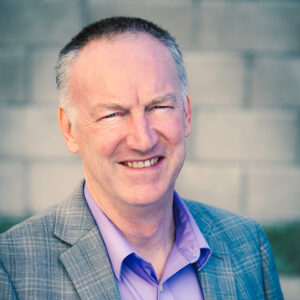The Wrong Mental Model Can Trap You
Stories are so powerful that they can delude a congregation. My wife and I worshipped years ago in a congregation whose principal self-identity was as a “family congregation.” But when we arrived the first time, we found almost no one in the sanctuary under retirement age. When the congregation’s young pastor had a baby, the congregation decided to replace the furniture in the nursery because no one had used the furniture in so many years that it was no longer up to child safety codes. So how could a congregation almost devoid of families think of itself as a family congregation? It has to do with the story of the congregation’s founding. It seems that in the 1940s or 1950s a woman named Albie Moe located the founding members of the congregation by walking the neighborhood looking for diapers hanging on backyard clotheslines. Wherever she found diapers, she knocked on the door and invited the family to the new church. Over the years, those families grew up. And, even if the kids have long-since moved away, some of those mothers still worship in the church. In fact, we discovered the power of the story one day when we sat in the pew belonging to the Smith family. Now, as far as I could tell, a geriatric woman named Mrs. Smith sat in that row each week all alone. And we thought we would be neighborly and sit next to her. We found out, however, that we had inadvertently invaded her space. You see, once or twice a year, her children and her grandchildren would come to visit and they would fill up the row. Just because those kids weren’t coming this week or next did not give us the right to sit in their seats. That’s the way most people in the congregation saw the world. In the minds of church folk, Mrs. Smith was simply a placeholder symbolizing the whole Smith family. In the end, the story became too powerful for the struggling congregation to overcome. When the pastor talked to the church board about making changes that would provide hospitality for young families that might visit, the board did not understand. “We are already a family church,” they would reply, “so we really don’t need to make any changes.” The story of Albie Moe was so powerful that it defined them. Even when presented with data that showed that they were obviously no longer a church of families, they found ways to see what the story told them to see. They turned Mrs. Smith into the Smith family and they saw themselves as a church that welcomed young families because they themselves had been welcomed more than a generation ago. Their pastor was one of the most gifted preachers I have ever heard, but he could not get that congregation to hear anything that contradicted the story of Albie Moe.
Congregations can also trap individuals within a story. For example, I was not sure I was a Christian until I could fit myself into the Christian story. Anyone who has spent much time in an evangelical congregation can testify to the pervasive power of the conversion narrative. The narrative structure says that people become Christians by turning from a life of sin to embrace the good news of the gospel. The structure presumes a dramatic turn. And that structure carries so much weight for defining what it means to be Christian that an evangelical youth often must contort his or her life experience in order to fit it into this narrative of conversion. I experienced the power of this narrative form when my religious identity was being formed. I was raised in a situation that one could compare to Saul of Tarsus, who was born a “Hebrew of Hebrews.” I grew up in the faith so that my parents’ prayers were answered and I never departed from that faith. But when I reached a certain age, it came time for me to be “converted.” My Sunday School teacher wanted me to “become a Christian,” which meant turning from the life I was living and embracing a Christian life. Or at least that was how it was explained to me. But I had already embraced the Christian life as best as a third grader knew how. The more appropriate thing, I know now, would have been for the church to provide me a forum to make a formal declaration of faith. But the narrative form is so strong among Evangelicals that my teachers would not consider me a Christian until I could say, “once I was lost, but now I am found.” I had to fit into the story in order to fit into the faith. To be an evangelical Christian meant conforming myself to the evangelical Christian story.

Scott Cormode
Hugh De Pree Professor of Leadership, Senior Fellow
Senior Fellow De Pree Center Hugh De Pree Associate Professor of Leadership Development Fuller Theological Seminary Scott Cormode, Ph.D., is a senior fellow at the Max De Pree Center for Leadership and is the Hugh De Pree Associate Pr...


